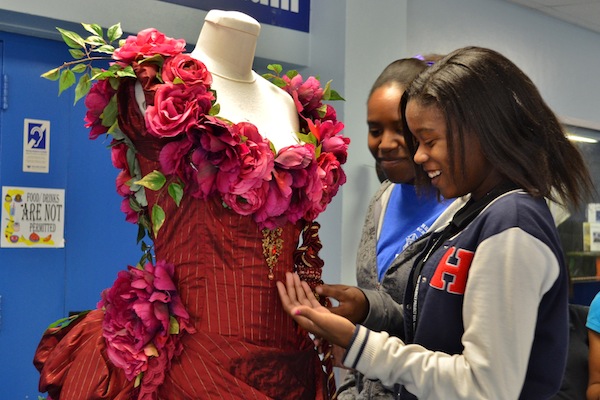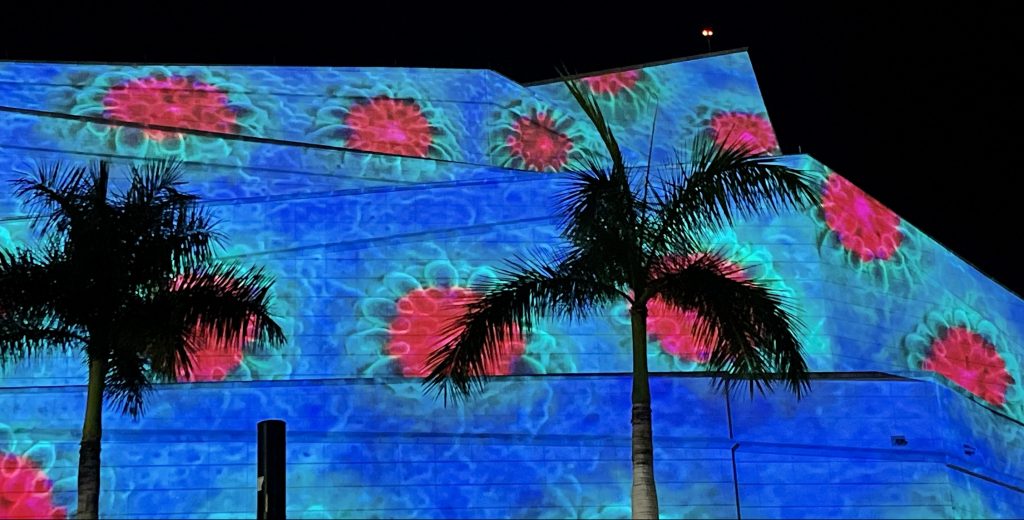
What do math, history, and opera have in common?
By Rebecca Casamayor, Florida Grand Opera
Florida Grand Opera’s (FGO) in-school educational programs allow students to engage in the art of the opera without having to leave the classroom. This past Wednesday, May 22, the company’s head of costuming, Camilla Haith, visited Richmond Heights Middle School to talk to students about the importance of subjects like art, history, and math and their real-world applications at the opera.
Camilla Haith visits Richmond Heights Middle School
Haith spoke to the students about her professional training, which includes multiple college degrees in fashion, theater, and costuming. Although her higher studies were integral in her path to running FGO’s costuming department, Haith emphasized the significance of her middle school education. “The thing I want to talk to you guys about today is that, even though my education is extensive, most of the things that I use in my job I learned in grade school and high school,” she said.
To enhance her presentation, Haith brought costumes from the company’s latest productions of Verdi’s La traviata and discussed historical context in theater. “Creating an opera means creating a world,” said Haith. “When you decide what the parameters of that world are going to be, then everyone on stage must exist inside that design.” The time period of the opera dictates everything from the details on the costumes to the elements of the set. To further explain this, Haith discussed the topic of fashion history in the 1800s, delighting students with amusing facts, such as little boys having to dress exactly like their mothers at a young age – skirt and all.
Haith went on to discuss the importance of math in costume design. “Geometry is a subject I hated and didn’t understand why I took it and, now, all I do is geometry all day,” she said. Haith explained how geometry, the study of shapes, is necessary when drafting patterns to create the garments. Her math must be perfect because she is constructing costumes for hundreds of performers every season and one mistake can mean thousands of dollars. Art, one of the more widely liked subjects, also has its applications in color theory, which comes in handy when dyeing fabrics. It’s necessary to know how colors work together to make new ones. As Haith put it, “you have to be able to look at the dye and see not just what colors are there, but what colors are missing – if it needs more blue or yellow.”
At the end of the lecture, Haith opened the floor to questions, so students could gain additional insight into the design process. She encouraged students interested in the arts to start seeking internships in high school and urged: “Never look at the arts as something you do in your spare time that isn’t going to give you a future because a future is there if you want it.”
For more information on Florida Grand Opera’s educational programs and how to bring the opera into your classroom, visit www.FGO.org/education.
Recent Content
-
Artsarticle ·
-
Artsarticle ·
-
Artsarticle ·
